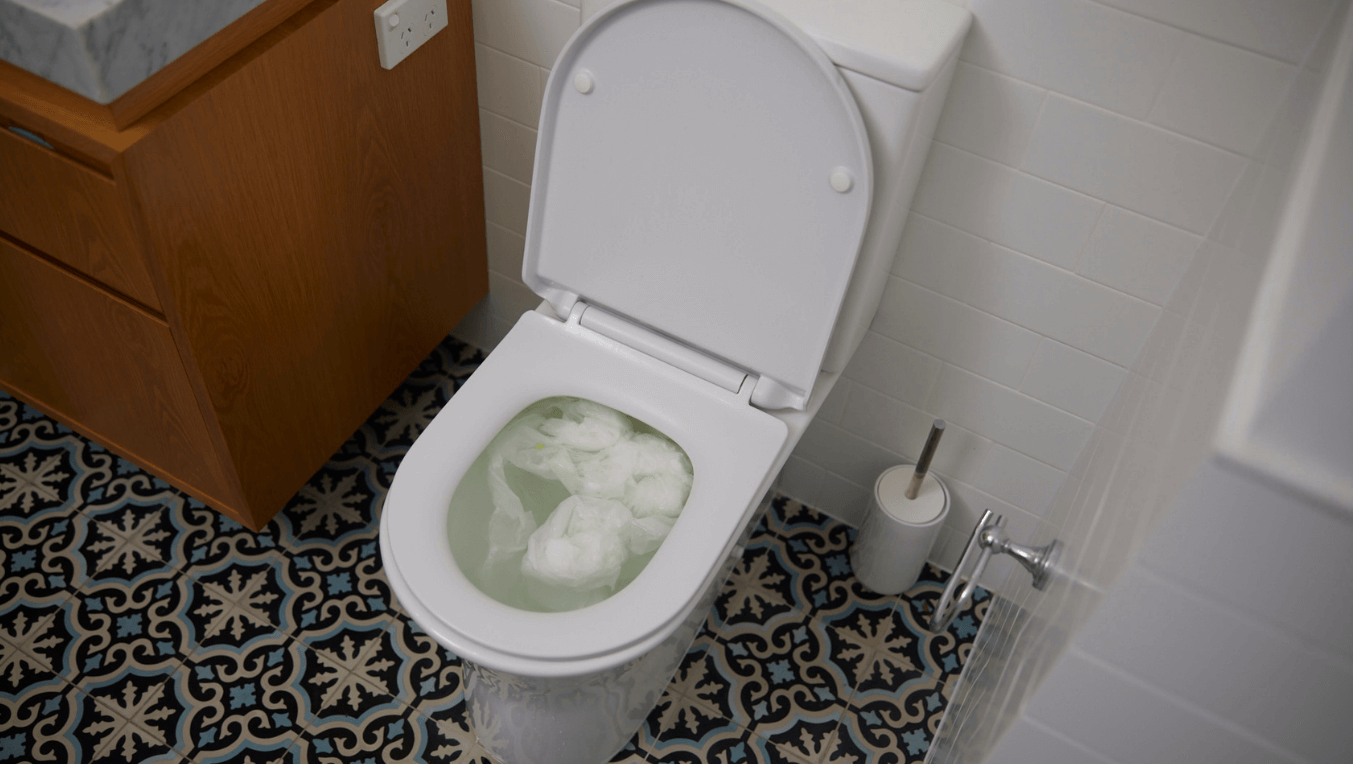It’s one of the most frustrating (and potentially embarrassing) things that can happen in your home is a blocked toilet drain. In fact, there may be only one thing worse – experiencing a clogged toilet at someone else’s home! With the panic that comes with the situation, we often try to solve the problem as quickly as possible by using the absolute worst techniques. The good news is, that aside from major blockages or pipe issues that require a plumber’s help, there are a number of solutions for this problem. The trick is to stay calm, ascertain the nature of the problem, and use the tools at hand. For those of us wondering how to unclog a toilet, here are some of the most effective ways.
Prevent An Overflow And See How Bad The Clog Is
Before looking at how to unblock a toilet, we need to look at how to prevent making the blocked drain worse. We all know the terrible feeling of seeing toilet bowl water rising instead of going down. A common response is to ‘hope for the best’ and flush again, praying for success the second time around. This is the worst possible decision. Instead, if you’re quick enough, you should immediately open the tank and close the ‘flapper’ (the rubber plug which opens to let water from the tank into the toilet bowl). This will minimise the water height in the bowl. To be extra safe, turn off the water supply to the tank as well. (Remember, in many cases once the clog is cleared the contents of the bowl will be sucked away down the pipes). Then, observe whether the bowl water slowly returns to the normal level or if it stays at the elevated level. If the first happens, then you have a complete clog, while the latter suggests a partial clog.
Toilet Plunger
Your number one weapon against toilet clogs is the toilet plunger. Ensure that you are indeed using a toilet plunger (a sink plunger, the often red, half-ball type, will not be as effective). Then, begin by inserting the plunger and gently pushing it in to avoid an explosive expulsion of the bowl’s contents. After this, pull the toilet plunger bell out – now that a seal has been created, you can begin plunging in earnest. Plunge vigorously and steadily, occasionally performing large and slow plunges. Three or four repetitions won’t do the job – up to 20 may be necessary. If you suspect a full blockage, it’s advisable not to attempt flushing until it’s clear the blocked toilet has been cleared and all its contents have gone down the drain. An important thing to remember is to ensure there is enough water in the bowl that the toilet plunger is covered so that a seal is successfully created.
If you don’t have a toilet plunger at hand, you can wrap a towel around a broom handle and push into the drain.
Toilet Snake
When speaking about how to unblock a toilet, the toilet snake is another go-to tool. A toilet snake is a long, flexible cable with a spiral auger at the end that is specifically designed for use in toilets. It is typically shorter than a closet auger and has a soft, cushioned end to prevent damage to the toilet bowl. Most households don’t own one of these, which is unfortunate because they are very efficient at clearing many more troublesome blocks. A sturdy wire coil with a corkscrew-like end, this bathroom tool helps break up waste-related blockages and can snag foreign objects. It works much how you would expect – by turning the snake (usually clockwise), the corkscrew end is worked into the blockage.
Closet Auger
There is a similar tool that is even more effective than the conventional toilet snake – the closet auger. This is a tool specifically designed to clear blocked toilets. A rubber sleeve prevents damaging the porcelain, while a large handle provides greater control over the recessed snake’s length and turning speed. You may need to reverse direction and then continue a number of times. When you have fully extended the auger, pull it back and flush the toilet. In the majority of cases that do not require a plumber’s intervention, this tool will clear the most stubborn of blocked toilets.
High Pressure Water Jetting
If these tried-and-tested methods of how to unclog a toilet don’t work, it is likely that the blockage needs a professional plumber’s help. A severely blocked drainage system can cause not only the embarrassment of a blocked toilet, but also permanent damage to your plumbing that will be expensive to repair. Pipe Relining Solutions being a drainage expert, can clear the blocked drain using high pressure water jetting. This is a method of cleaning and clearing clogs in plumbing and sewer lines. It uses a high-pressure stream of water, typically at pressures ranging from 10,000 to 40,000 PSI, to blast away blockages and debris. The water is forced through a small nozzle at high speed, creating a powerful cutting action that can remove tough clogs and buildup. This method is effective for cleaning pipes, drains, and sewers, as well as removing stubborn grease and oil deposits. It is also a environmentally friendly alternative to chemical drain cleaners.
Experienced Plumbers Using Modern Techniques
At Pipe Relining Solutions, we are experienced professionals that specialise in clearing blocked drains using techniques such as high-pressure water jetting equipment – also effective as a preventative and maintenance measure. We are dedicated to saving you money through the accurate diagnosis of drain issues. We use state-of-art techniques including Closed Circuit Television (CCTV) inspection to locate and understand the cause of the blockage. If you are in Sydney and experiencing a blockage problem, or simply wish to make sure your plumbing is in good shape and avoid greater expense down the road, contact us today and let us help you maintain the integrity of your home’s plumbing!
